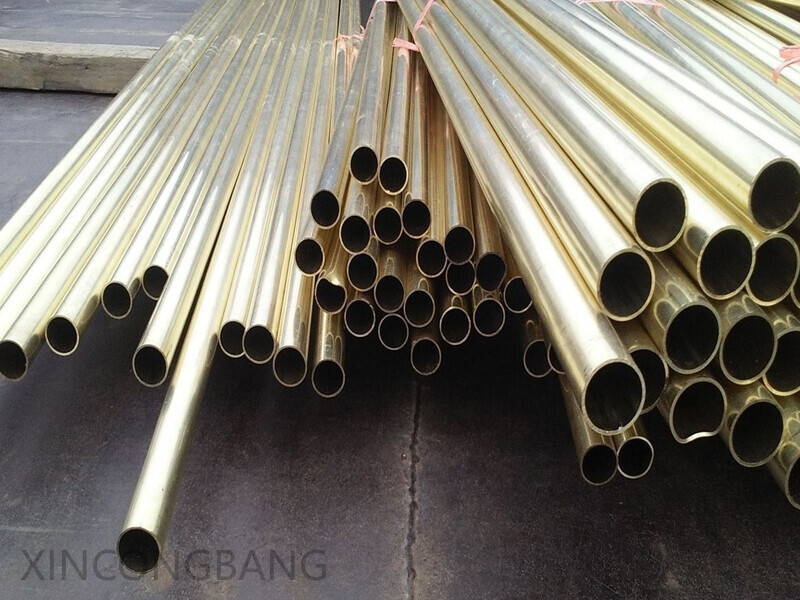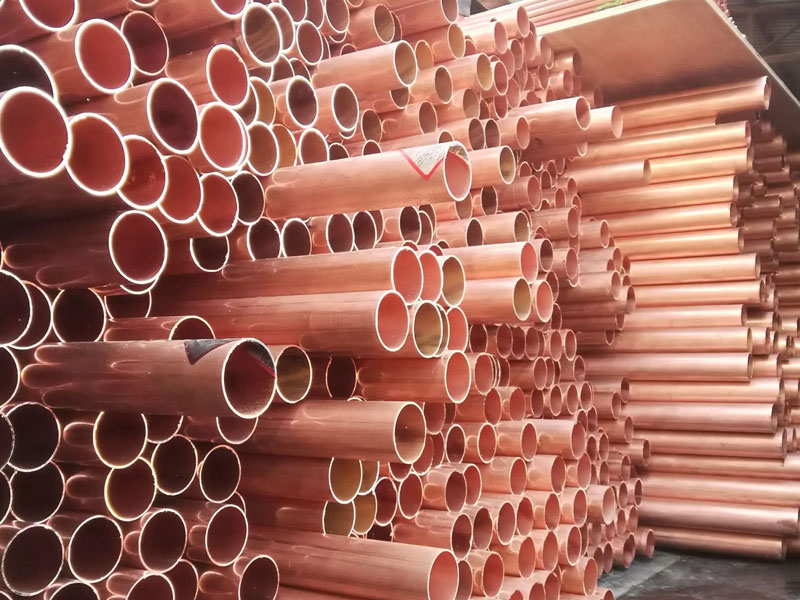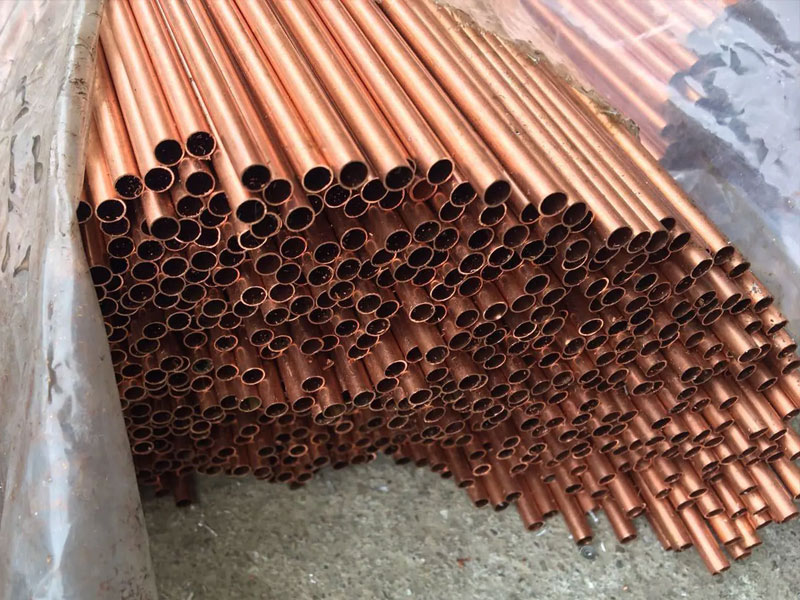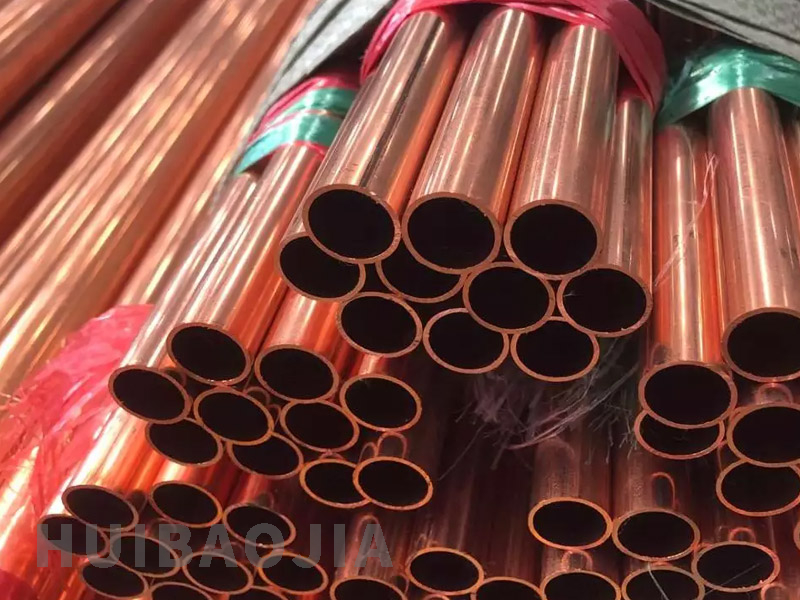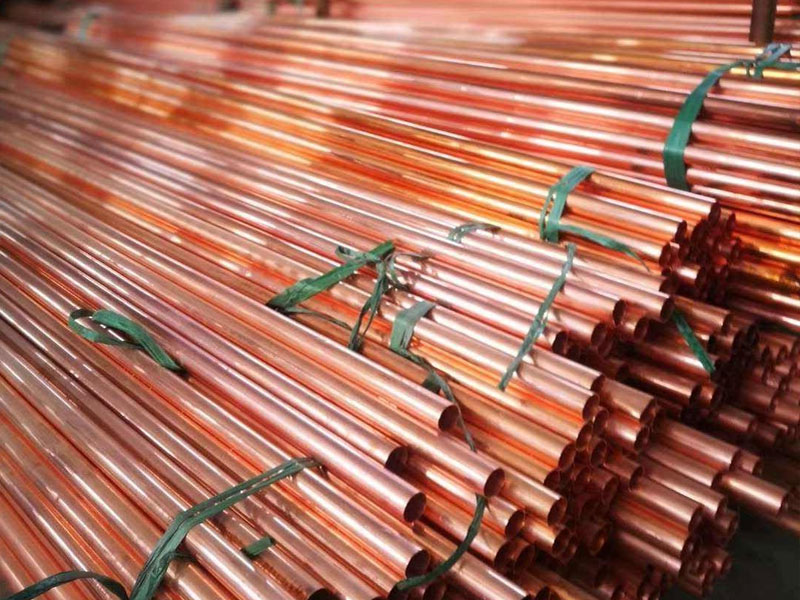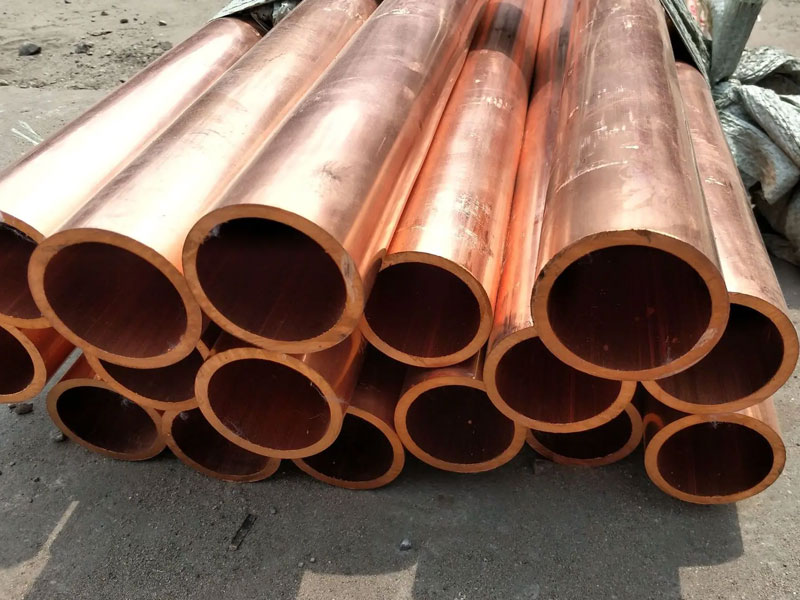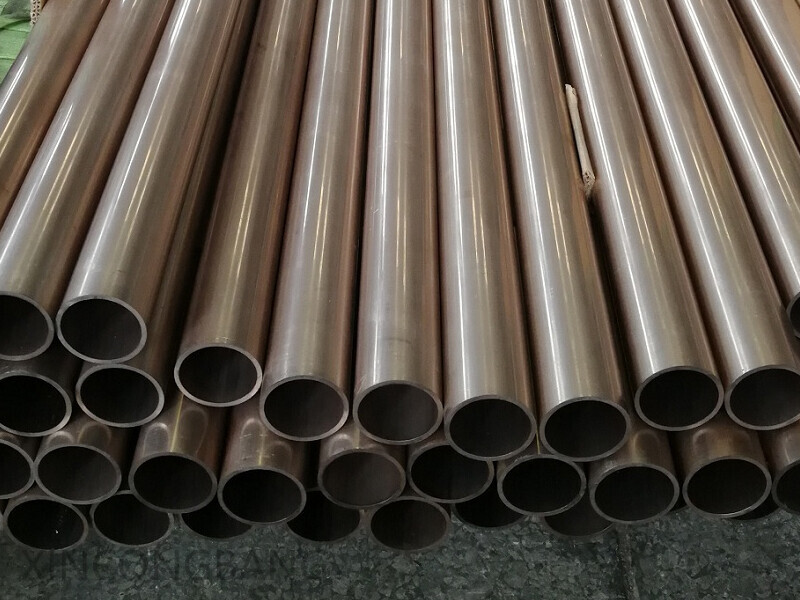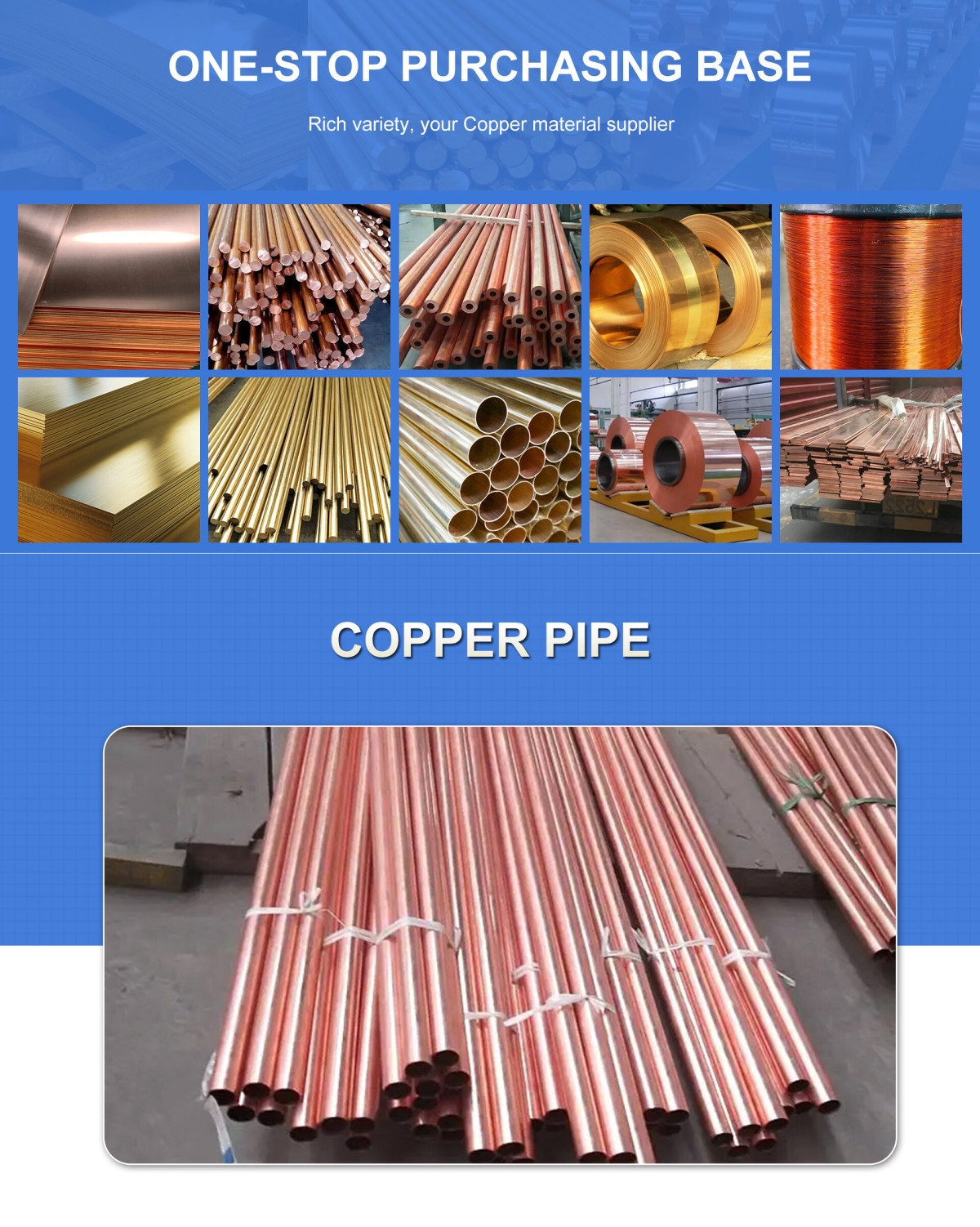
Detailed size range
Outer diameter (OD):
Minimum: 1/8 inch (about 6mm) to 1/2 inch (about 15mm).
Maximum: up to 20 inches (508mm) or larger, depending on the product type (seamless or welded). For example:
Seamless pipe: 3mm to 419mm, some standards cover up to 508mm.
Welded pipe: DN15 (about 15mm) to DN500 (500mm).
Wall thickness:
Minimum: 0.2mm (ultra-thin precision pipe) to 1.0mm.
Maximum: 11mm (seamless pipe) or Sch160 grade (corresponding to high-pressure thick wall).
Common range: 1.0mm to 5mm (general engineering applications), special requirements such as SCH80 pipe wall thickness can reach 3mm and above.
Length:
Standard length is 6 meters, can be customized up to 12 meters or cut as required.
International Standards
C70600 pipes follow the following main standards, covering material composition, mechanical properties and manufacturing processes:
ASTM/ASME Standards:
ASTM B466 / ASME SB466: Core standard for seamless pipes, specifying outer diameter, wall thickness and chemical composition (such as Ni 9%-11%, Fe 1%-1.8%).
ASTM B111: Applicable to seamless pipes for condensers and heat exchangers, with an outer diameter of ≤80mm.
ASTM B467: Welded pipe standard, suitable for larger sizes (such as outer diameter >419mm).
European Standards:
DIN 86019: Specifies the material as CuNi10Fe1.6Mn, with an outer diameter range similar to ASTM.
EEMUA 234: Commonly used in marine engineering, covering wall thickness and pressure rating (such as 20bar).
BS 2871 CN102: British standard, with chemical composition consistent with ASTM B466.
Other standards:
JIS H3300 C7060 (Japan), MIL-T-16420K (U.S. military), and EN CW352H (EU).
Chemical composition
Core components:
Copper (Cu): Balance (88.6%-90.8%), main base metal.
Nickel (Ni): 9.0%-11.0%, provides corrosion resistance and strength.
Iron (Fe): 1.0%-1.8%, enhances corrosion resistance.
Manganese (Mn): 0.5%-1.0%, improves processing performance.
Impurity limits (ASTM standard):
Zinc (Zn) ≤1.0% (≤0.5% for welding purposes);
Lead (Pb) ≤0.05% (≤0.02% for welding);
Phosphorus (P), sulfur (S), carbon (C), etc. ≤0.02%-0.05%.
Mechanical properties (significantly affected by processing conditions)
Basic range:
Tensile strength (UTS): 275-520 MPa
(Annealed state is about 275-450 MPa, and can reach 520 MPa after cold working or heat treatment).
Yield strength (YS): 105-393 MPa
(Annealed state is lower, such as 105-200 MPa; it can be increased to 393 MPa after strengthening treatment).
Elongation (EL): 10%-45%
(Annealed state has high elongation, which decreases significantly after cold working).
Hardness: 60-80 HRB (Brinell hardness 100-130 HB).
Influence of processing conditions:
Annealed state (O60): lower strength (tensile strength 300-345 MPa), high elongation (≥30%).
Cold worked state (H55/H04): tensile strength increased to 415 MPa, elongation reduced to 10%-25%.
Welding performance: good, suitable for TIG/MIG welding, but impurity content needs to be controlled.
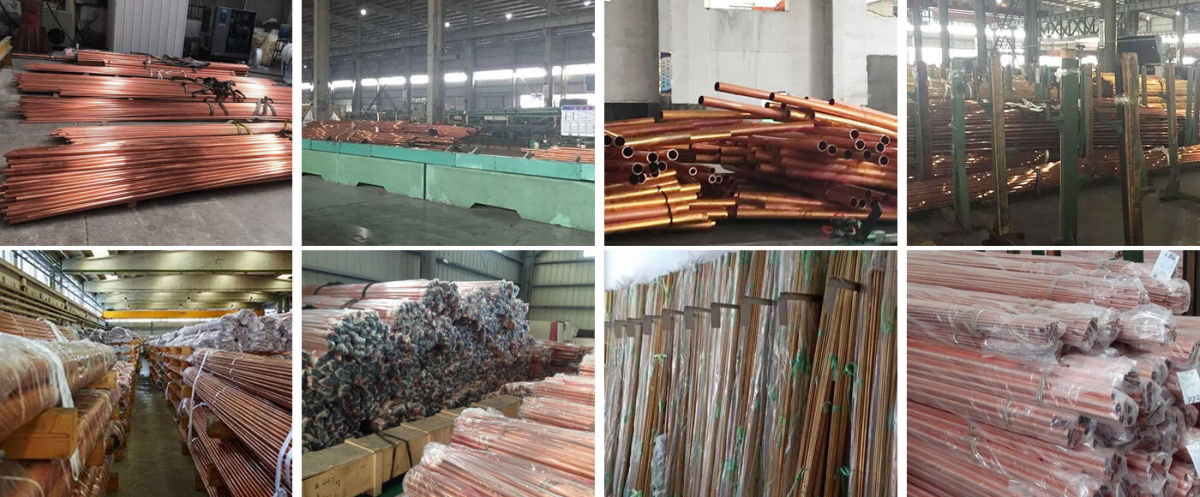
C70600 copper tube production process
The production process of C70600 copper tube involves multiple precision steps, mainly including the following processes:
Material preparation: Select C70600 copper-nickel alloy billets that meet the standards to ensure that their chemical composition (such as 90% copper, 10% nickel and trace iron, manganese, etc.) meets the standards.
Smelting and casting: The cathode copper and alloying elements (such as nickel and iron) are smelted to about 1200°C in an industrial frequency furnace, and then horizontal continuous casting is performed to form a tube billet.
Hot working: The tube billet is hot rolled or forged, and the initial shape and size are adjusted by extrusion or rolling.
Cold forming: The wall thickness and diameter of the tube are refined by cold drawing, cold drawing or planetary rolling. Some processes require drawing oil lubrication to reduce friction.
Welding and forming: TIG (argon arc welding), MIG (gas shielded welding) or SAW (submerged arc welding) are selected for welding according to needs, which is suitable for pipes of different sizes. Cold bending or hot bending is required after welding to meet specific shape requirements.
Heat treatment: Anneal the pipe after welding or cold processing (such as low temperature annealing) to eliminate internal stress and improve material toughness.
Surface treatment: Enhance surface corrosion resistance through pickling, passivation or polishing process, and some application scenarios require coating treatment.
Quality inspection: Including chemical composition analysis, mechanical property testing (such as tensile strength ≥ 275-380MPa), non-destructive testing, etc., to ensure that the product meets ASTM and other standards.
Product advantages of C70600 copper pipe
Excellent corrosion resistance:
Excellent performance in seawater, salt water and high flow rate (up to 4.5 m/s) environment, and its resistance to uniform corrosion and local corrosion is significantly better than ordinary steel and other copper alloys (such as C68700).
The dense oxide film formed on the surface can resist the adhesion of acids, alkalis, solvents and biological fouling, and is suitable for marine engineering, chemical equipment and seawater desalination systems.
Excellent mechanical properties:
Tensile strength ≥275-550MPa, elongation ≥28-30%, high hardness and good wear resistance, can withstand high pressure, high temperature (melting point 1149-1243°C) and complex stress environment.
Elastic modulus 140 GPa, thermal expansion coefficient 13.9×10⁻⁶ m/(m·K), strong thermal stability, suitable for heat exchange equipment.
Excellent processing and welding performance:
Outstanding cold and hot processing performance, can be formed by cold drawing, rolling, forging and other processes, and easy to weld (TIG/MIG/SAW), with high weld strength and good sealing.
High plasticity, can be made into complex shapes of pipes, elbows, flanges and other components.
Multifunctional physical properties:
Excellent thermal conductivity (thermal conductivity 50.2 W/(m·K)), suitable for heat exchange equipment such as condensers and heat exchangers.
Good electrical conductivity (resistivity 12.5nΩ·m), can be used in electrical components and ship cable systems.
Non-magnetic to weakly magnetic, meet the needs of special environments (such as electronic equipment).
Additional advantages:
Antibacterial properties: The surface can inhibit bacterial growth, suitable for medical devices and food industries.
Economical: Compared with titanium alloy or stainless steel, it has lower cost and longer maintenance cycle, especially suitable for large-scale applications such as offshore platforms and petrochemicals.
Q1:Do you provide samples? Is it free or extra?
A1:Yes, we can provide samples free of charge and the customer will pay the freight.
Q2:What if I don't have export experience ?
A2:We have reliable forwarder agent which can ship items to you by sea/air/Express to your doorstep. Any way, we will help you choose the most suitable shipping service.
Q3:How long is your lead time?
A3:If it is in stock, it is usually 5-10 days. Or, if there is no inventory, 15 days, depending on the quantity.
Q4:What are your terms of payment?
A4:30% T/T deposit in advance, 70% T/T balance within 5 days after B/L copy, 100%.Irrevocable L/C at sight, 100% Irrevocable L/C after receive B/L 30-120 days, O/A.
Q5:How is your technical support?
A5:We provide lifetime online support through Whatsapp/ Skype/ Wechat/ Email. Any problem after delivery, we will offer you call anytime.
Welcome To Your Inquiry
What can we help you?
RELATED PRODUCTS




